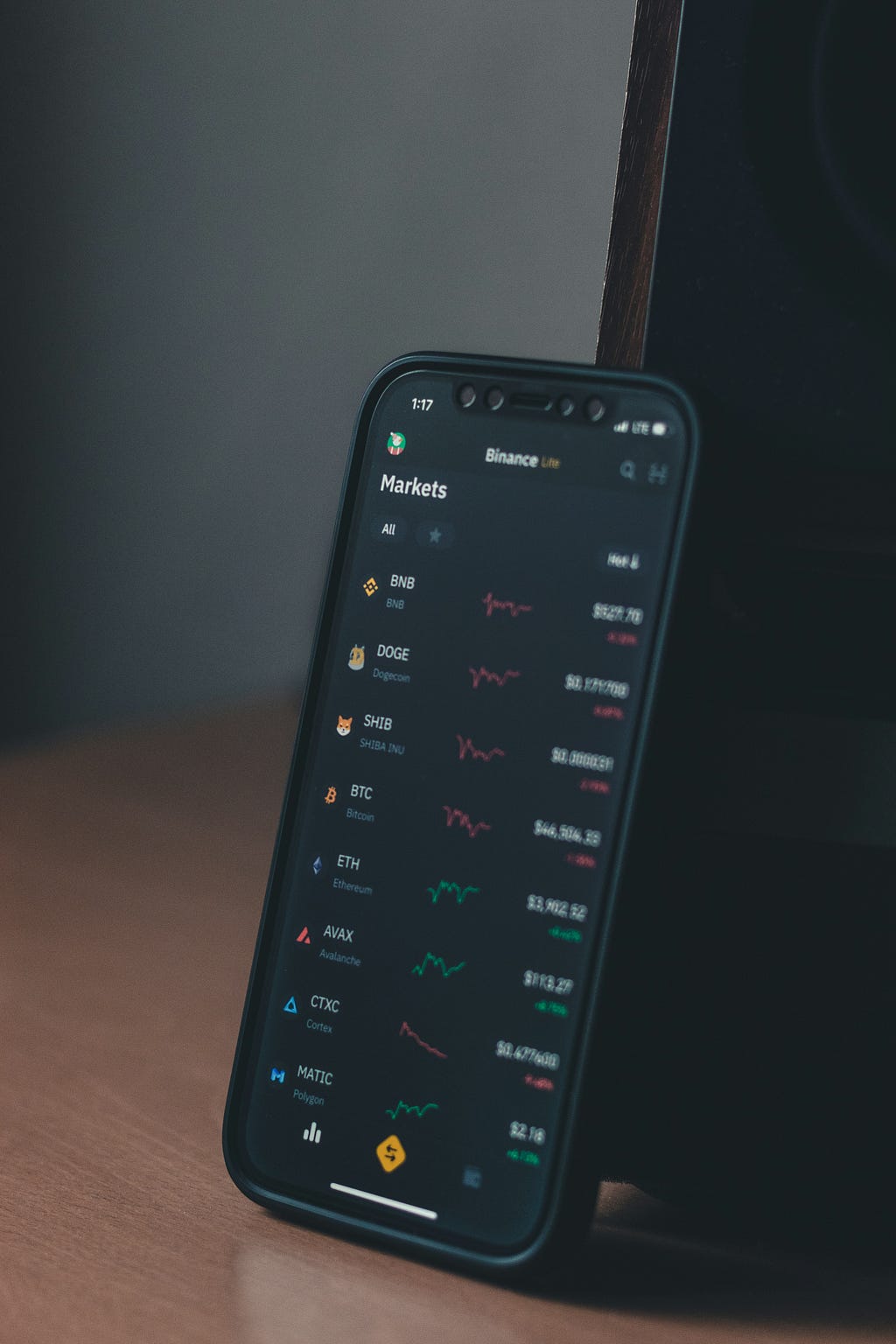Managing a crypto portfolio can feel like juggling fire — thrilling but risky if you’re unprepared. With the market’s notorious volatility, it’s essential to have a strategy that protects your investments while maximizing growth potential. Whether you’re a seasoned trader or just getting started, these expert tips can help you navigate the ups and downs of the crypto world with confidence.
 Photo by Behnam Norouzi on Unsplash
Photo by Behnam Norouzi on Unsplash1. Diversify, Don’t Overcommit
One of the golden rules of investing is to never put all your eggs in one basket. In crypto, this means spreading your investments across different assets to reduce risk.
Why it matters:
Cryptos like Bitcoin and Ethereum are relatively stable (by crypto standards), but smaller altcoins can offer higher potential gains — along with higher risks.A diverse portfolio balances your exposure to both.Expert tip:
Consider a mix of blue-chip cryptos (e.g., Bitcoin, Ethereum), mid-cap altcoins, and emerging projects. Aim for a portfolio that reflects your risk tolerance and goals.
2. Set Clear Goals
Before investing, ask yourself: What’s your goal? Are you looking to grow wealth over the long term, or are you more focused on short-term profits?
Why it matters:
Long-term holders (or “HODLers”) ride out market dips with the expectation of higher returns down the line.Short-term traders might prioritize quick profits by capitalizing on market volatility.Expert tip:
Define your strategy upfront and stick to it. This will help you avoid panic selling during market crashes or FOMO (fear of missing out) during surges.
3. Rebalance Regularly
Crypto markets move fast, and the value of your portfolio can change drastically in a short time. Rebalancing ensures that your portfolio stays aligned with your investment goals.
How to rebalance:
Periodically sell overperforming assets to lock in profits.Use those funds to buy underperforming assets or increase your holdings in safer options like Bitcoin.Expert tip:
Set a schedule for rebalancing — monthly or quarterly works for most investors. This helps you take profits during bull markets and prepare for dips.
4. Use Dollar-Cost Averaging (DCA)
Timing the market is almost impossible, especially in crypto. That’s where DCA comes in. By investing a fixed amount at regular intervals, you reduce the risk of making large purchases during market peaks.
Why it works:
It smooths out the impact of market volatility by spreading your investment over time.You avoid the emotional stress of trying to buy the dip or sell at the top.Expert tip:
Automate your DCA strategy through exchanges that allow recurring buys, so you don’t have to think about it.
5. Keep a Portion in Stablecoins
Stablecoins are tied to the value of traditional currencies, like the US dollar, and act as a safety net for your portfolio.
Why they’re useful:
They protect your funds during market downturns.You can quickly reinvest them when opportunities arise without waiting for bank transfers.Expert tip:
Allocate 10–20% of your portfolio to stablecoins like USDT, USDC, or DAI, especially if you’re actively trading.
6. Stay Informed, but Avoid Overload
Crypto news moves fast, and it’s easy to feel overwhelmed by the sheer volume of information. Staying informed is important, but overreacting to every headline can hurt your decision-making.
How to filter the noise:
Follow reputable sources for news and analysis.Focus on long-term trends instead of daily price swings.Expert tip:
Set aside specific times each week to review the market and your portfolio. This helps you stay informed without becoming consumed by every minor fluctuation.
7. Protect Your Assets
Security is a non-negotiable part of managing your crypto portfolio. Unlike traditional investments, there are no safety nets if your funds are hacked or lost.
Key security tips:
Use a hardware wallet to store your crypto offline.Enable two-factor authentication (2FA) on all your accounts.Avoid sharing private keys or seed phrases with anyone.Expert tip:
Never store large amounts of crypto on exchanges. While convenient for trading, exchanges are prime targets for hackers.
8. Be Prepared for Volatility
Crypto’s rollercoaster price movements are part of the game. What matters is how you respond to them.
How to manage volatility:
Keep emotions in check — don’t panic sell during dips or buy impulsively during pumps.Stick to your long-term plan, even when the market gets shaky.Expert tip:
Use stop-loss orders to limit potential losses and take-profit orders to lock in gains when the market hits your target levels.
9. Monitor Your Taxes
Crypto taxes can get complicated, and failing to keep track can lead to headaches — or worse, penalties.
What to do:
Keep records of every trade, transfer, and transaction.Use crypto tax software to simplify reporting.Expert tip:
Consult a tax professional who’s familiar with cryptocurrency regulations in your country to avoid surprises when tax season rolls around.
10. Only Invest What You Can Afford to Lose
This may be the most important tip of all. Crypto is exciting, but it’s also highly speculative. No matter how promising a project looks, there’s always a risk of losing your investment.
Why it matters:
Overcommitting can lead to financial stress.Staying within your limits ensures you can weather market downturns without panic.Expert tip:
Treat crypto as a high-risk, high-reward investment. Diversify your portfolio beyond crypto by including safer assets like stocks, bonds, or real estate.
Final Thoughts
Managing a crypto portfolio doesn’t have to be overwhelming if you approach it with a clear plan and disciplined mindset. By diversifying, staying informed, and protecting your assets, you’ll be better equipped to navigate the wild ride of the crypto market.
How to Manage Your Crypto Portfolio with These Expert Tips was originally published in The Capital on Medium, where people are continuing the conversation by highlighting and responding to this story.


 11 hours ago
2
11 hours ago
2 









 Bengali (Bangladesh) ·
Bengali (Bangladesh) ·  English (United States) ·
English (United States) ·